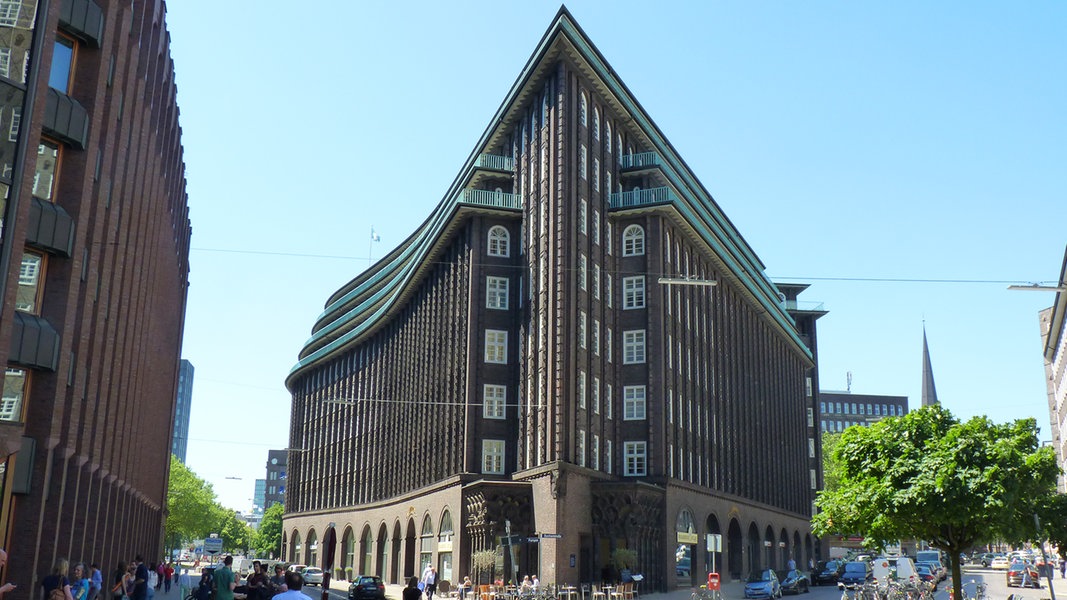Status: 03/28/2023 11:04 a.m
It is one of the most important buildings of Brick Expressionism and probably the most imposing office building in the world: the Chilehaus in Hamburg, designed and built by Fritz Höger between 1922 and 1924.
The ten-storey building is particularly impressive when the visitor approaches from the south-east. The clinker brick building rises into the sky like a huge, pointed ship’s bow, the entire outer facade with its 2,800 windows is curved. Since July 2015, the Chilehaus has been part of the Kontorhaus district and, together with the neighboring warehouse district, a UNESCO World Heritage Site.
Chilehaus is the core of the Kontorhaus district
The interior of the Chilehaus is no less impressive: heavy mahogany doors, winding staircases and ceramic ornaments adorn the massive building, which is grouped around a rectangular inner courtyard. The Chilehaus forms the core of the Kontorhaus district, which consists of other imposing brick complexes such as the Sprinkenhof right next door.
4.8 million bricks and 750 freight cars of cement
Alongside Fritz Schumacher, architect Fritz Höger is regarded as the most important representative of North German Brick Expressionism. He used 4.8 million bricks and 750 freight wagons of cement for the huge office building that he built for Hamburg businessman Henry Brarens Sloman. Sloman had left Hamburg as a young man for Chile and later became rich through the saltpetre trade. In 1898, at the age of 50, he returned to his hometown and later commissioned what was then the largest office building in Germany, measuring 36,000 square meters.
Building rests on concrete pillars
Höger had to submit 17 planning applications before the Senate approved the construction, which was built on two plots of land with a total area of almost 6,000 square meters. The plan to build over the Fischertwiete street in particular was initially met with skepticism. Because the building was built on damp ground, concrete piles were used in the foundations, and the cellar and heating rooms were specially protected against flooding due to their proximity to the Elbe. Because of its spectacular architecture, the building soon attracted worldwide attention. After completion, small and medium-sized import and export companies that were active in overseas trade settled in the office building.
Listed as a historical monument since 1983
Today the building houses medical practices, law firms and a number of offices, especially for smaller companies. Restaurants, a department store and several smaller retailers have settled on the ground floor around the inner courtyard. Visitors can only get an impression of the imposing building from the outside and by visiting the inner courtyard. The offices inside are not open to the public. The Chilehaus has been a listed building since 1983.
Map: Chilehaus, Kontorhausviertel and Speicherstadt
World Heritage in the North


